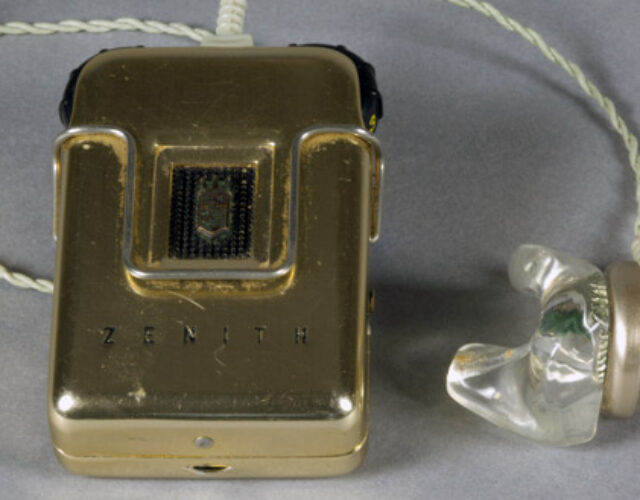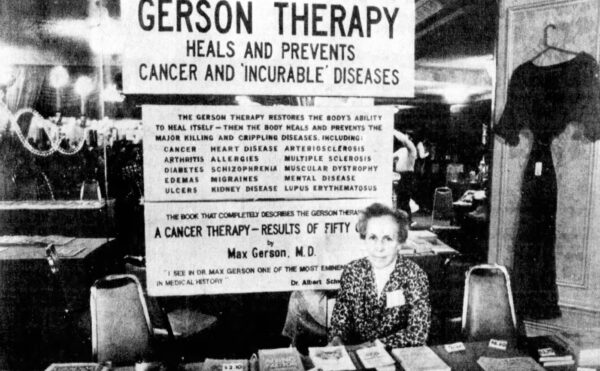In the late 1930s portable radios sold for as little as $25. Meanwhile most portable hearing aids sold for upward of $200. Eugene McDonald, Jr., president of the Zenith Radio Corporation, realized hearing aids were essentially miniaturized portable radios (they included much of the same circuitry). McDonald, himself hard of hearing, gave his company a task: build a portable, high-quality device that anyone could afford.
The 1939 Ravox was Zenith’s first hearing aid. It was a 6-pound tabletop unit that cost around $30 and plugged into a standard electrical outlet. The company began work on a portable hearing aid, but after the United States entered World War II, Zenith switched much of its production to building radar and communications equipment for the military. Zenith soon recognized a new war-related market: hearing aids that would allow the hard of hearing to bolster a civilian workforce whose numbers had been reduced by conscription. In 1943 Zenith sold its first wearable Radionic model for $40.
Zenith’s earliest hearing aids, like its radios, used vacuum-tube circuitry, which required considerable battery power and took up significantly more space than modern solid-state circuits. The Radionic, for instance, measured 5J by 2I inches, weighed more than 7 ounces, and attached to an even heavier external battery pack. Vacuum-tube hearing aids were cumbersome, uncomfortably warm, and required frequent battery changes. Zenith’s instruction booklets suggested attaching the hearing aid to underwear and concealing the battery pack in pants pockets or a specially made holster.
Bell Laboratories developed the transistor in the 1940s, and its invention quickly attracted the attention of Raytheon engineer Norman Krim, who recognized its potential for hearing-aid manufacturers. In the 1930s Krim had developed subminiature vacuum tubes that allowed Raytheon to corner the hearing-aid market for vacuum tubes. By 1951 Raytheon had honed mass production of transistors.
Zenith made its first transistorized hearing aid, the Model T, in 1953 with Raytheon transistors. Early transistors proved fickle and were sensitive to users’ sweat, but by the middle of the decade their durability had improved. Technological advances were trumpeted by manufacturers: “Extra Tiny, Extra Light!” read the 1955 newspaper advertisements for the Zenith Crusader. The gold-colored box that housed the Crusader’s circuitry was roughly the size of a Zippo lighter and weighed 1½ ounces. It was small enough to be clipped to a necktie and didn’t require external batteries. The newly commercialized transistor made the Crusader possible because it could amplify and switch signals at a fraction of the energy cost and size of a vacuum tube. By 1957 Zenith, along with several other producers, was selling hearing aids tiny and light enough to fit into the arm piece of specially made eyeglasses, setting hearing aids on track to become the minuscule versions common today.




